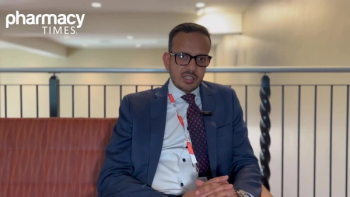
Opioid Crisis to Increase in Upcoming Years
A recent model by Massachusetts General Hospital projects that without proper policy, public health and health care delivery efforts, the opioid overdose epidemic will increase.
Researchers at the Massachusetts General Hospital Institute for Technology Assessments (MGH-ITA) estimate that restricting access to prescription opioids will have minimal effects on the opioid overdose epidemic, which they project to increase in the future. In a study published in JAMA Open Network, the authors predict that the changing nature of the epidemic, driven by the illegal use of opioids such as heroin and fentanyl, has reduced the potential impact of programs that target prescription opioids.
According to corresponding author Jagpreet Chhatwal, PhD, of MGH-ITA, the opioid epidemic began in the 1990s due an upsurge in opioid prescriptions. In 2010, he stated, the crisis included a rise in deaths from both prescription opioid overdoses and in overdose deaths due to heroin.
"In the past 5 years, deaths have accelerated with the introduction of the powerful synthetic opioid fentanyl into the opioid supply, leading to a continuing increase in overdose deaths at time when the supply of prescription opioids is decreasing,” Chhatwal said in a press release.
According to the press release, Chhatwal's team used data from sources such as the National Survey on Drug Use and Health and the CDC to develop the Opioid Policy Model, reflecting the trajectory of the opioid epidemic in the United States from 2002 to 2015. That model was then used to project probable outcomes from 2016 to 2025.
The researchers’ model followed a status quo scenario, in which the future misuse of prescription opioids would not decrease over time. According to the study, the model projects that the annual number of opioid overdose deaths will increase from 33,100 in 2015 to 81,700 in 2025, an increase of 147%. The model also predicts that during those years, a total of approximately 700,000 people will die from an opioid overdose, 80% from illicit drugs such as heroin and fentanyl. By 2025, half of all new opioid users are predicted to begin with illicit rather than prescription drugs. In all scenarios tested, interventions directed towards reducing misuse of prescription opioids were projected to decrease overdose deaths by only 3% to 5%.
"This study demonstrates that initiatives focused on the prescription opioid supply are insufficient to bend the curve of opioid overdose deaths in the short and medium term,” co-author Marc Larochelle, MD, MPH, of the Grayken Center for Addiction at Boston Medical Center, an assistant professor of Medicine at Boston University School of Medicine, said in the release. “We need policy, public health and health care delivery efforts to amplify harm reduction efforts and access to evidence-based treatment."
Chhatwal adds, "If we rely solely on controlling the supply of prescription opioids, we will fail miserably at stemming the opioid overdose crisis. Illicit opioids now cause the majority of overdose deaths, and such deaths are predicted to increase by 260%¾from 19,000 to 68,000¾between 2015 and 2025. A multipronged approach, including strategies to identify those with opioid use disorder, improved access to medications like methadone and buprenorphine, and expansion of harm reduction services such as the overdose-reversal drug naloxone, will be required to reduce the rate of opioid overdose deaths."
Newsletter
Stay informed on drug updates, treatment guidelines, and pharmacy practice trends—subscribe to Pharmacy Times for weekly clinical insights.






















































































































































































































